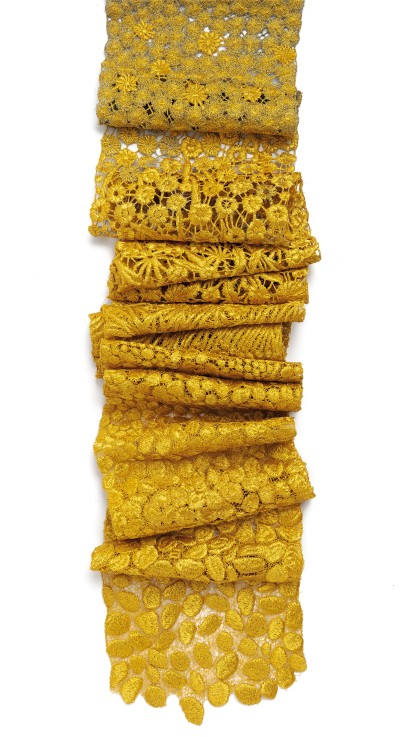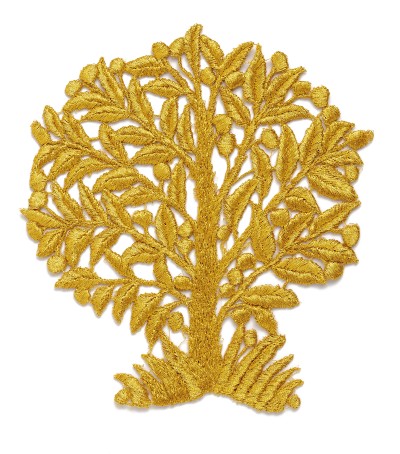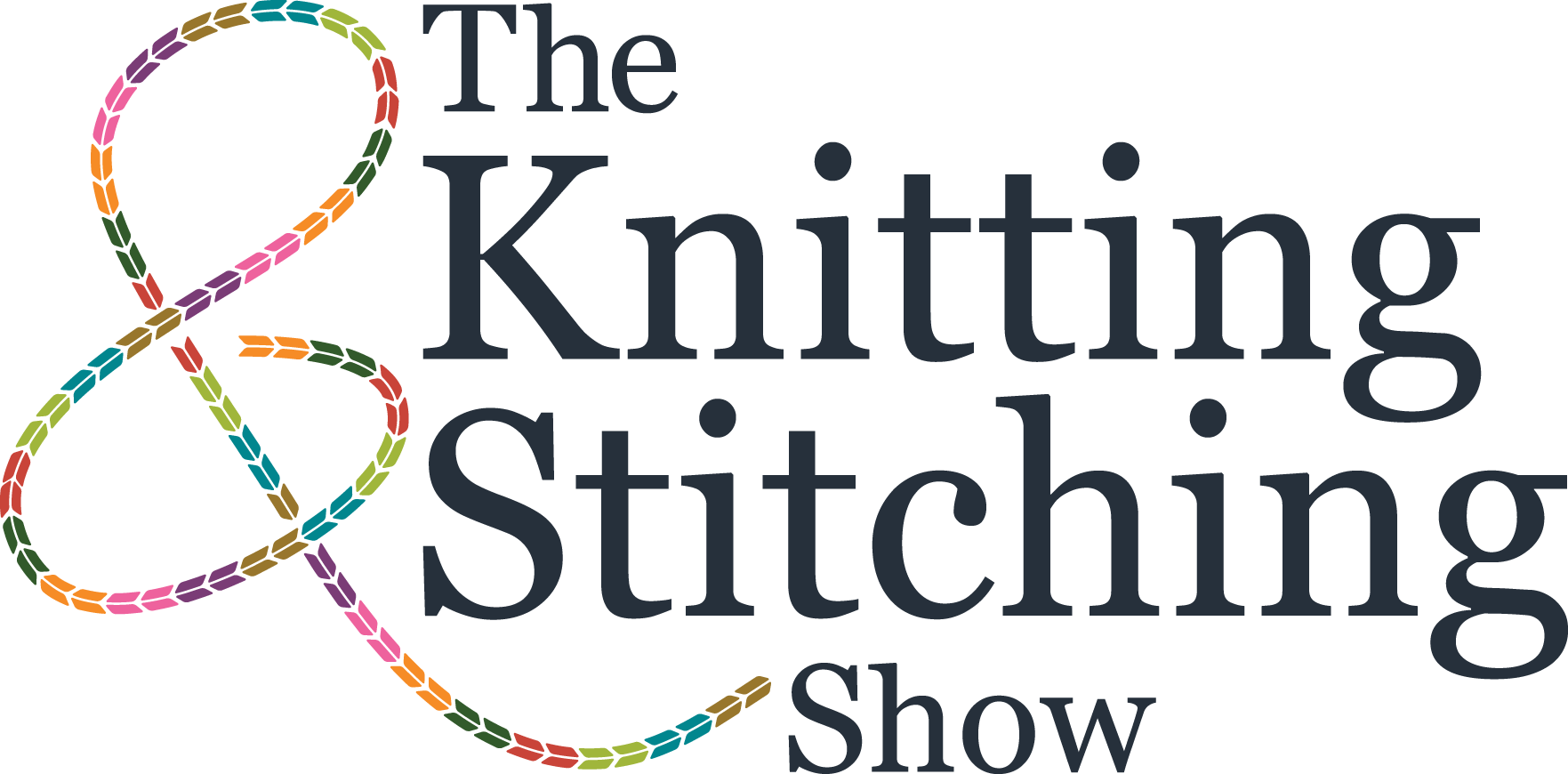Kate Wells is a hand and machine embroidery artist. Her exhibition, Dip Your Mind in Gold, was at The Knitting & Stitching Show London at Alexandra Palace from 7th-10th October 2021 and The Knitting & Stitching Show Harrogate at Harrogate Convention Centre from 18th-21st November 2021.
Kate, it was fantastic to be fully immersed in your wonderful world of intricate gold work at The Knitting & Stitching Show this autumn. Is there something particularly special, different, or challenging about working with gold thread? What’s its appeal for you?
Working with gold thread has its challenges – the most delightful aspect of the challenge is to shift the mindset from embroiderer to metal-worker and think like a jeweller or goldsmith. My points of reference come from these crafts, rather than from the world of traditional gold embroidery. Having said that, Opus Anglicanum is the very pinnacle of stitched goldwork, simply down to incredible draughtsmanship and composition and execution. Medieval and renaissance goldsmiths’ work come from the same root and continue to inspire me along with more contemporary design in gold and metal. I like the limit it gives the work. Most of my gold pieces so far have minimized the use of colour and tone which has simplified many choices in designing, concentrating on the way that light moves across its reflective surfaces. Even with a limit, the possibilities open up further – adding jewel colours is an obvious step, but then there’s further to go with playing with texture and added materials. I added gold into some landscape embroideries which was interesting, keeping the gold under control within the drawing and blending of the colours. Gold brings a dimension that has to be handled carefully to avoid sparkle and glitter. It resonates with the splendour of life, the preciousness of being.

You are inspired by nature too and have made many beautiful landscape and bird embroideries. They have such a painterly quality. Do you think you ‘see’ in thread when observing scenes in nature?
I am drawn to nature, the landscape and birds, air and wind. Drawing and painting have always been primary tools and I carry a small sketchbook and fineliner pen in my pocket on most walks. I love these little sketchbooks as the scribbles come back to life with an immediacy that a camera doesn’t quite capture. When I start to select threads, it’s the colour or texture mixes I reference, so the bottom thread is as important as the top thread in the machine, both mixed together on the surface. The same happens when using a charcoal or graphite drawing for the starter – I use textures of grey-white-black thread-mixes to give the graininess of the stitched drawings.
Your work is part of The Diana Springall Collection. What does it mean to you to have your work included in that important collection of fine art?
The Diana Springall Collection is probably the most significant body of contemporary embroidered work brought together under one discerning eye. Not only does the owner of the collection love embroidery, but is also a practicing embroiderer and artist so her special understanding runs right through the diversity of the collection.
Diana’s passion for the art of embroidery runs deep and is founded in the importance of drawing. To be part of this collection, even in a small way, is to feel connected to a significant group of artists whose work is respected and valued at the very best level. I hope to be showing a small stitched sketch, ‘Beach ll’, from the collection at The Knitting & Stitching Show this year.

Much of your work is made for clients to commission. How long does that process tend to take from start to finished work, and what does it involve?
Working to commission can be a slow process – especially if there is an order-book waiting for my attention! The original conversation is really important to get the ‘feel’ from the client, the occasion or dedication behind the work or to see the space that the work needs to be designed for. Sometimes the process needs research, sampling and even several starts before the real direction is established, then the work can be made quite quickly. The research stage is easily as long as the making. The client rarely appreciates this time-factor but every now and then, there’s a sense of having a ‘patron’ who is willing to support this whole process for the long-view of the final piece.
As well as your art, you make stoles and pieces for churches and the clergy. Is that a different creative process for you? What’s the most elaborate church commission you’ve ever had?
I was invited to make a set of bespoke stoles for a church in Sheffield as part of the celebratory aspect of their worship. Unusually, there was a significant collection of beautifully designed and well-made contemporary textiles in the church which I seemed to resonate with and I’ve since added more work to their collection, sponsored by members of the congregation. I like the format of stoles, and tend to see the whole length as a design-area, rather than simply adding a motif or icon at the hem. The most elaborate commission came from an inspired newly ordained priest who wanted a set of stoles in each seasonal colour but who had the most detailed list of significant images to be included for each stole design. We got on really well; each visit was like opening a jewel box for her and my colour palette of silks and rayon threads also grew. The entire collection cost far more than we could have imagined but somehow, we met in the middle and the result was a delightful addition to her worship. I’ve not made work for Bishops or made altar-cloths for cathedrals and it may not be my first line of work, but it has a depth of meaning which I value.
What are you working on currently and what’s next for you?
Currently I’m working on a new series ‘Bahia’, inspired by Brazilian ‘Baiana’ costume, which launches this October, and I will be hosting a special event in London to mark the release. Details of the launch will be shared exclusively with my mailing list, so I encourage signing up via my website (www.onomeotite.com) to be in the know. I’m also preparing for a group exhibition with the Craft Council in November 2021 where I’ll be showcasing a very special collage celebrating black female artists in the UK. Again, all information can be found on my website and social media pages. This year is definitely going out with great events.
To see more work from Onome Otite, click below.
